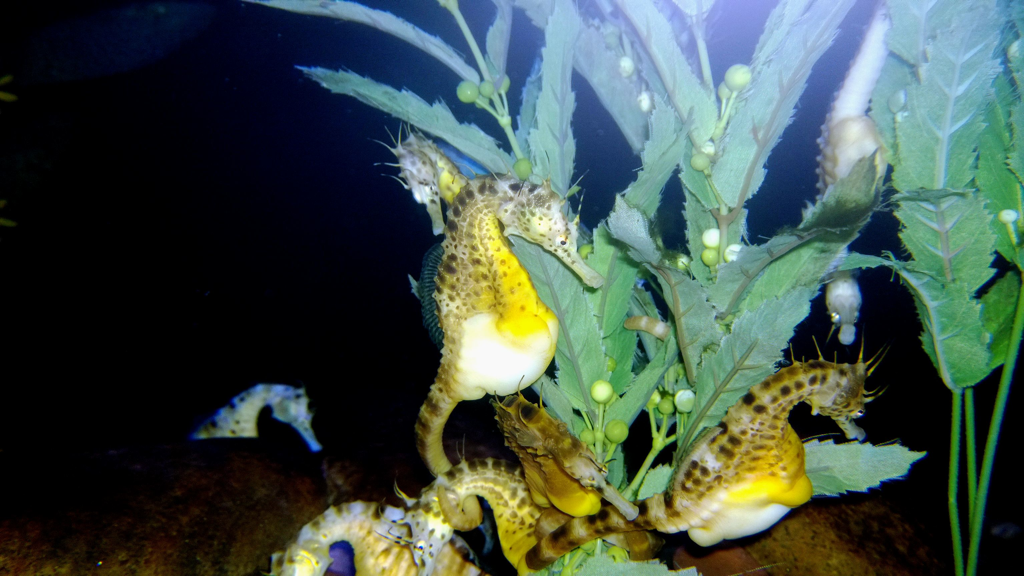Description: The pot-bellied seahorse, as the name suggests, has a large swollen belly. Like other seahorses, this species comes in a wide range of colors – brown, yellow, gray, white, orange or mottled with dark spots on its head and trunk. They have a forward-tilted, long-snouted head, eyes that can move independently of each other and a prehensile tail. Males and females differ in appearance. Males have a longer tail, a shorter snout and a smooth soft pouch-like area at the base of the abdomen. Females have more of a pointed stomach.
Size: They are one of the largest seahorse species, with a length up to 14 inches (36 cm).
Behavior: They are strong swimmers. Swimming is powered by the rapidly oscillating dorsal fin and steering is controlled by use of the fins on either side of the body (pectoral fins). They are more active at dusk and night than during the day. Their coloring allows them to blend easily into the seagrasses and weeds.
Diet: They feed on crustaceans, such as shrimp and amphipods, which are sucked into their tube-like snouts and ingested whole.
Senses: The eyes are on the sides of its head and move independently of each other.
Reproduction: It is the males, not the females, who become pregnant. Mature males develop a pouch on the belly, know as the brood pouch. Females insert their ovipositor (organ that lays eggs) into the male’s pouch and lays her eggs, then the male fertilizes them. After about 30 days, the male delivers the baby seahorses which look like the adults. After birth, the babies are fully independent and must fend for themselves.
Habitat/range: Pot-bellied seahorses are found in the south-west Pacific around Australia and New Zealand where it inhabits harbors and sheltered coastal bays. They are found among algae, seagrass and in deeper water attached to sponges.
Status: Hippocampus abdominalis are common and shown as Data Deficient (DD) by IUCN.



